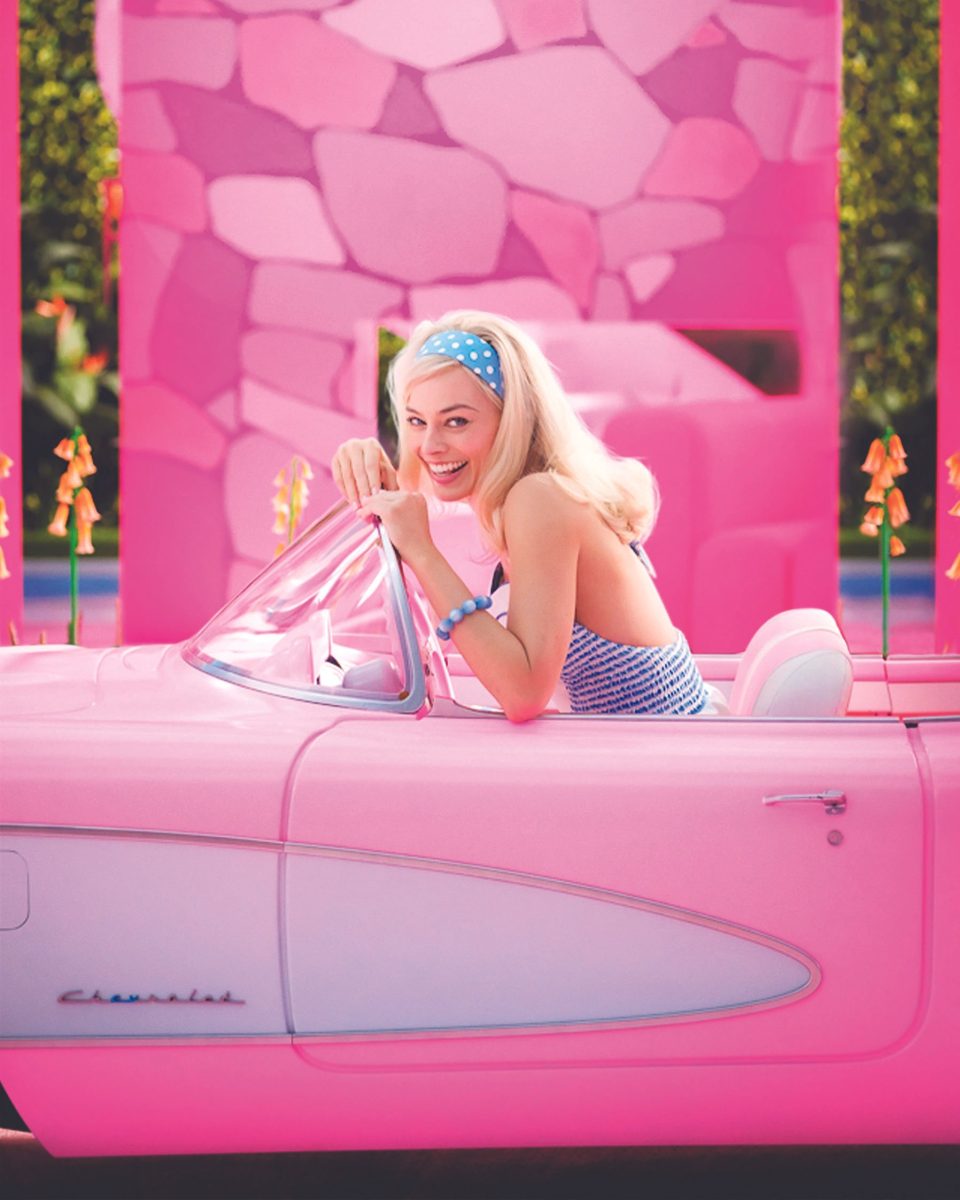Greta Gerwig’s “Barbie,” released on July 21, was the poppy, pink and star-studded blockbuster comedy event of the summer. Starring Margot Robbie as Barbie and Ryan Gosling as Ken, the film made over $150 million on opening weekend in the United States and was also the largest domestic opening for a female director, according to Deadline.
The accolades received and records broken exemplify just how much fun the movie is: it’s comedic and joyous, with playful references to cultural touchstones and original songs complete with choreographed dance numbers. It’s also an ode to femininity and a toy that has been both beloved and despised for generations, although the movie tends to fumble on some of its themes of womanhood, humanity and feminism.
“Barbie” is everything you could want from a summer blockbuster: the cast of supporting characters features names such as Kate McKinnon, Will Ferrell and America Ferrera, and alongside stars Robbie and Gosling, all do a wonderful job of portraying their characters. Barbieland is bright and colorful, and the movie manages to make everything feel big and show-stopping without being overwhelming. It pivots between drama and comedy, laughing at the flaws in the patriarchy while still emphasizing how hard it makes it to be a woman.
These pivots, however, can result in many of the movie’s central themes feeling oddly unsupported. One of the film’s best moments is a speech by Gloria (Ferrera) in which she describes all the impossible double standards for women, inspiring Barbie to try and take back Barbieland from the Kens, who have introduced patriarchy to their world. It’s a beautifully acted scene, but the fact that the rest of the movie’s dialogue regarding these double standards and the difficulty of being a woman has been in the form of one-liners or other comedic scenes, giving the speech little emotional basis within the film.
Barbie’s own normalness – she is, of course, Stereotypical Barbie – also occasionally makes her overshadowed by Ken’s goofiness and bizarre lines. Gosling acts his heart out as Ken and is an absolute delight, but the zaniness granted to his character ultimately makes his performance more memorable – ironic, considering Ken’s role as the sidekick and his own overshadowing of Barbie as he introduces patriarchy to Barbieland.
“Barbie” has been lauded for its diverse cast, including Issa Rae, Sharon Rooney, Hari Nef and Ritu Arya, among others, but it does little to meaningfully incorporate that diversity. The actresses’ respective Barbies have prestigious jobs in Barbieland, such as president, lawyer, doctor and journalist, and while the film does incorporate their jobs as more than just the title in front of their Barbie names, there’s little examination of the intersectionality of feminism with being a person of color, being transgender or not conforming to traditional expectations of appearance. The movie glosses over any ways to incorporate these identities into its themes and is instead frequently gender essentialist, cisnormative and prescribed to exclusively one cultural worldview.
It is difficult to judge any media by what it doesn’t do; there’s no way of knowing that those themes would have been executed well had they been included. But when “Barbie” centers so much around feminism, patriarchy and systems of oppression, it feels strange – or simply lazy – that intersectionality is never touched upon. Of course, at the end of the day, “Barbie” is a movie produced in part by Mattel, making it in many ways a very expensive ad for the company. Anything more complex than the white, American, cisheteronormative feminism that the film presents probably wouldn’t help sell toys. For the most part, though, Gerwig covers up this fact with ease, and Barbie is still a remarkably fun time – as long as you don’t try to pick it apart.







